 Chris Hamilton
.
November 04, 2020
.
C10 Builders Guide
Chris Hamilton
.
November 04, 2020
.
C10 Builders Guide

In 2017, Randall Robertson, founder of Rtech Fabrication in Coeur d’Alene, Idaho, debuted a Chevy truck that kind of changed everything. Named The Duke—an homage to John Wayne—the Cummins- powered ’72 crew cab with the stubby nose is big, bold, uniquely stylish, and has tons of swagger. If a truck could single handedly stop a fistfight in a saloon or steal your girl, The Duke would be the one to do it.
“He’d just finished The Duke and it was at SEMA,” recalls Ramiro Rodriguez, who commissioned Randall to build another four-door a year or so prior. “Randall invited my brother and me to go see The Duke. Man, it’s a beautiful truck.
 “Well about a week later, Randall forwards this photo to me,” he continues. Someone Photoshopped The Duke as a Blazer, something Randall admits he was already itching to build. “Randall’s like, ‘It’s gotta be built and I’m gonna build it.’ And I said, ‘Well I gotta have it.’ And that was that. Within a week he was working on it.”
“Well about a week later, Randall forwards this photo to me,” he continues. Someone Photoshopped The Duke as a Blazer, something Randall admits he was already itching to build. “Randall’s like, ‘It’s gotta be built and I’m gonna build it.’ And I said, ‘Well I gotta have it.’ And that was that. Within a week he was working on it.”
An Rtech truck looks a lot simpler than it is, which partly explains why Randall moved almost every operation in-house. The crew-cab doors in the other builds, for example, aren’t Suburban pieces. “They’re actually too short if you want any back-seat space,” Randall notes. So Rtech makes them from conventional pickup door components, fabricating a bunch of stuff that nobody will ever see.
But the lack of two extra doors doesn’t make Ramiro’s Blazer—nicknamed Bulldog for its stocky stance—any less complicated.
 Because the medium-duty cowls and firewalls differ so greatly from light-duty parts, Rtech based Ramiro’s Blazer on an actual medium-duty cab.
Because the medium-duty cowls and firewalls differ so greatly from light-duty parts, Rtech based Ramiro’s Blazer on an actual medium-duty cab.
“That’s the only thing Blazer in the whole thing,” Randall says, pointing to the windshield frame. “The other reason we didn’t use a Blazer is that they have a super short wheelbase—shorter than a Blazer, which is already shorter than a shortbed truck.”
Using a long for the rest of the body yields a 120-inch wheelbase, roughly halfway between a standard short- and long-box light-duty truck.
Splicing the cab to bed was only part of the conversion.
“The fender flares come way down in back to protect the fuel tanks that medium-duty trucks got,” Randall points out.
So, the Rtech crew bobs them. And yes, those are front flares on the rear.

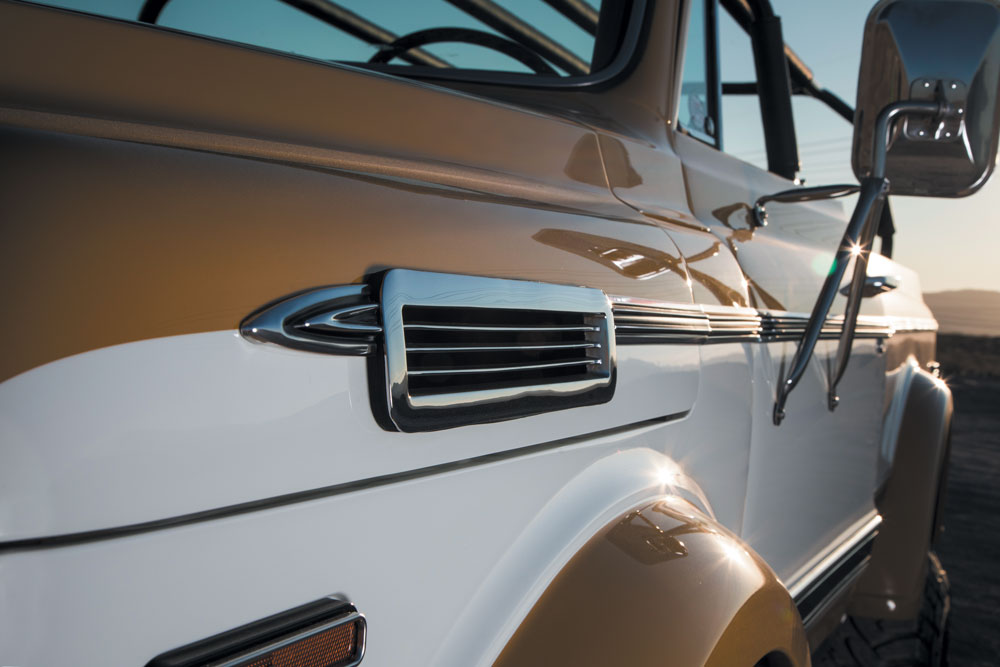 “They are but they aren’t,” Randall says. “There’s so much structure behind those to keep everything from moving around. If you kicked them, you’d probably break a toe before you hurt the things.”
“They are but they aren’t,” Randall says. “There’s so much structure behind those to keep everything from moving around. If you kicked them, you’d probably break a toe before you hurt the things.”
Rtech fabricated with diamond plate tops to make them resemble period pieces. The front mounts a WARN Zeon 12 winch.
Rather than building a cage as an afterthought, the Rtech crew built the truck around the cage.
“As soon as it gets to the windshield frame, it goes into the A-pillar,” Randall says. “Once it gets down to the base of the windshield it goes from tube to bar stock that ties into the cowl.”
The body’s integrity means that it can mount on hydraulic biscuits that further isolate the cab from the chassis.
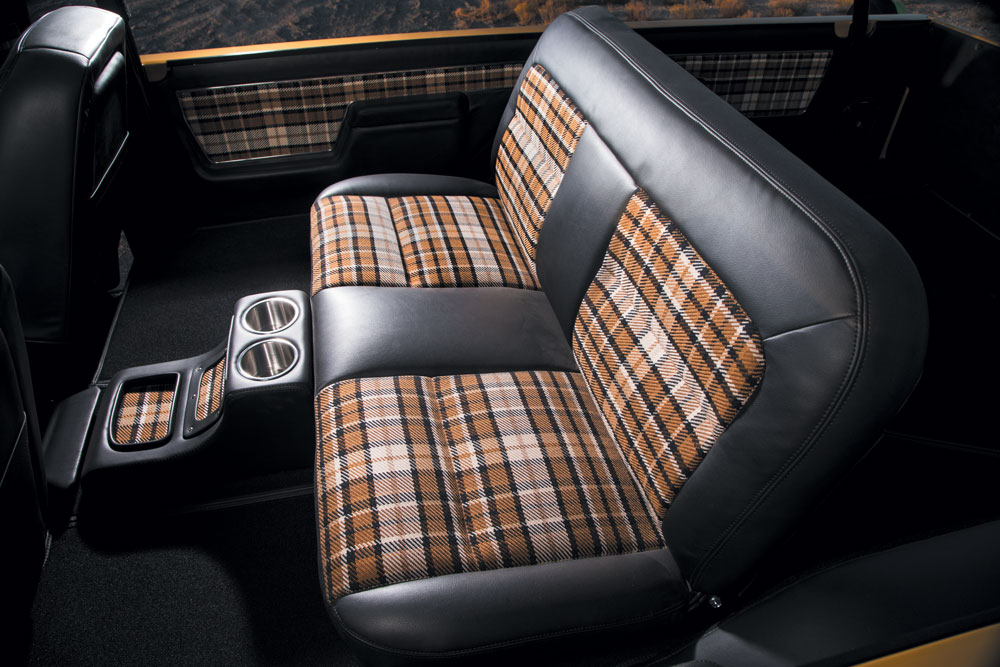
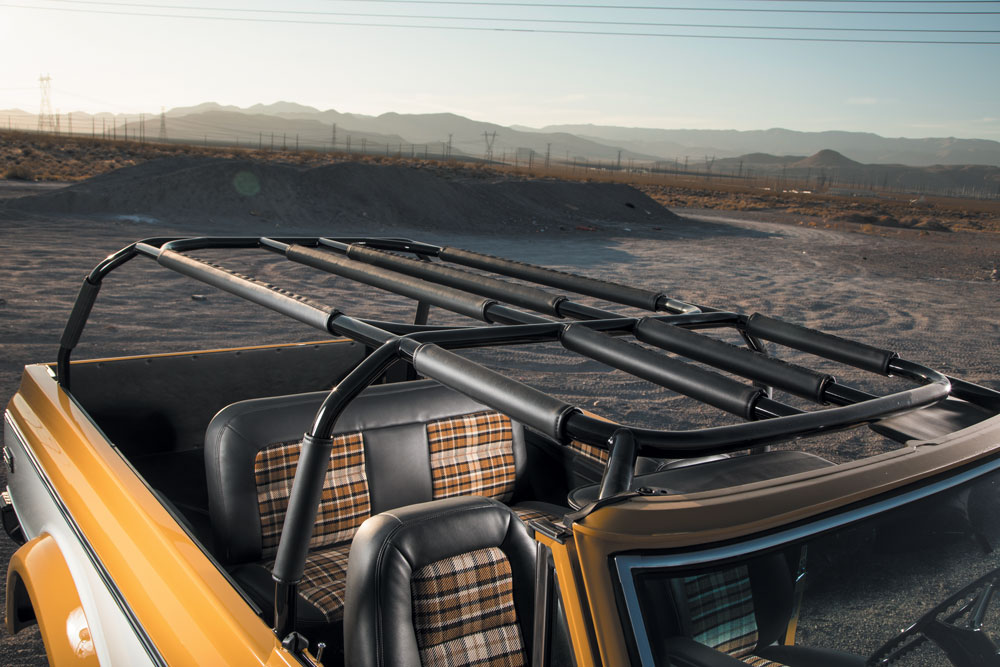 And what a chassis it is. Instead of altering stock light-duty truck frames, R-Tech builds on medium-duty frames—think dump trucks, moving vans and Class A motorhomes.
And what a chassis it is. Instead of altering stock light-duty truck frames, R-Tech builds on medium-duty frames—think dump trucks, moving vans and Class A motorhomes.
“A built Cummins makes a lot of torque,” Randall says, praising the frame’s 9 1/2-inch cross-section and 1/4-inch thickness. “Will a 3/4- or one-ton frame handle a turned-up Cummins? If it’s a cruiser, sure. But throw 40-inch tires at it and do work with it and things will start breaking. We like to say that we build trucks to do truck things. And that means we have to make everything tough even if only one person actually uses these trucks that way.”
Rtech fabricated the oversized four-link suspension. The 14-bolt rear axle has a locker; the Dana 60 up front remains open. Both spin 4.11 gears and wear drilled-and-vented rotors (Off Road Design in the rear). They mount American Force 20×14.5 G23 Zeros with Toyo 40×15.50R20LT Open Country M/Ts. F-O-A made the 2 1/2-inch remote-reservoir coilovers.
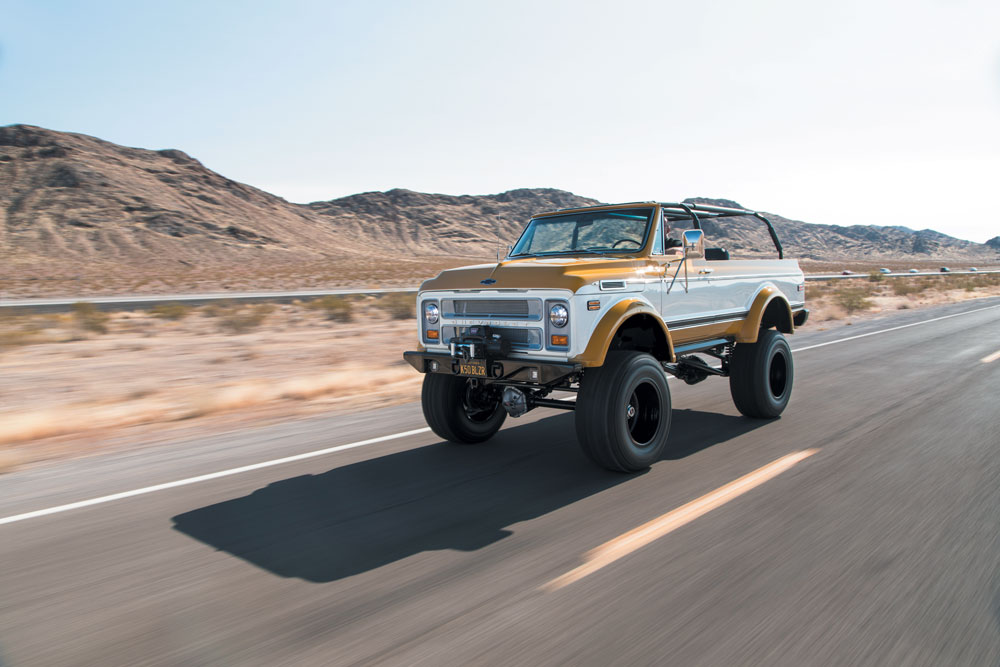
 Red Head Steering Products rebuilt a long-sector Saginaw steering box with a broach for a 4×4 pitman arm.
Red Head Steering Products rebuilt a long-sector Saginaw steering box with a broach for a 4×4 pitman arm.
“It puts the steering column in the perfect place,” Randall says.
It pushes an Off Road Design crossover-steering system.
Rtech built the 12-valve Cummins with a mild cam, Dynamite Diesel Stage II injectors, and a BD Diesel manifold and Super B turbo. It belts out 550hp to a 47RH gearbox, which in turn spins a New Process 205 transfer case. The lower engine mounting and firewall recess gives just enough room for the Cummins, a good thing as the rest of the components filled up the engine bay.
Preserving the factory trim gives the truck a factory-like appearance. As he did with The Duke, he had Auto Paints Plus in Post Falls mix up Lusid Technologies Northstar urethane in GM Ochre and White. Externally, the only visible deviation from stock (well, besides the wheels and stance and all) is a pair of running boards made AMP Research XL-series retractable boards.

 The interior looks straight from a 1972 brochure. But it’s not; the Rtech crew back-dated a pair of 2010 Sierra seats and their matching console with a combination of French-seamed vinyl with Highlander inserts. Extending the factory radio boss made it possible to mount a double-DIN head unit. An Old Air Products climate-control system mounts behind the dash and its condenser hides under the intercooler.
The interior looks straight from a 1972 brochure. But it’s not; the Rtech crew back-dated a pair of 2010 Sierra seats and their matching console with a combination of French-seamed vinyl with Highlander inserts. Extending the factory radio boss made it possible to mount a double-DIN head unit. An Old Air Products climate-control system mounts behind the dash and its condenser hides under the intercooler.
Ramiro took delivery of The Bulldog at the end of the 2019 SEMA Show. He’s like a boy with a puppy.
“I just can’t wait to play with it,” he says, explaining that he must keep it in a double-stacker trailer because it won’t fit under his garage door. “I’ve been working on another Blazer for the last eight to 10 years. But now, with this thing? Why even bother?”
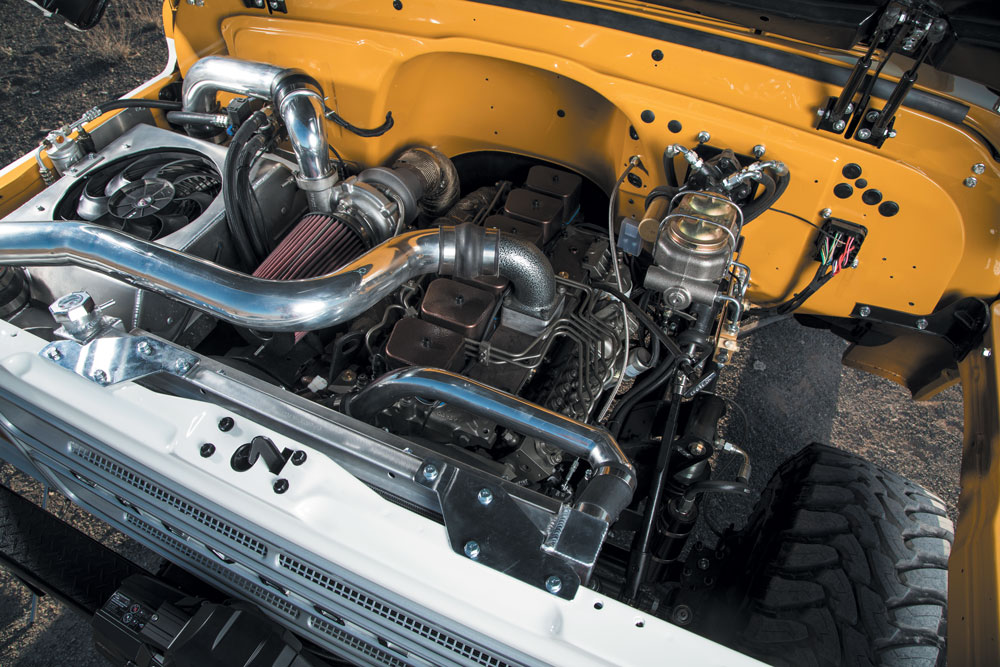
Share Link